French cuisine has a long and fascinating history, with traditional foods that have been enjoyed for centuries. In the Middle Ages, the nobility indulged in extravagant feasts featuring exotic spices and ingredients like peacock, while the diets of peasants revolved around vegetables and legumes. Over time, French cuisine spread and evolved through the publication of cookbooks and the influence of French colonizers. The 1800s saw the emergence of haute cuisine, characterized by moderation and quality. French cooking techniques require patience and attention to detail, and the use of fresh, high-quality ingredients is essential. In French cuisine, presentation and elegance are of utmost importance, contributing to the overall dining experience. The French Revolution had a profound impact on food, with bread and salt at the center of the conflict. Ultimately, the revolution gave birth to the modern restaurant in France. Exploring the past and present diets of France provides valuable insights into the country’s rich cultural and culinary heritage.
Key Takeaways:
- French cuisine has a rich history that spans centuries.
- The diets of the nobility and peasants in the Middle Ages were vastly different.
- French cuisine evolved through cookbooks and the influence of French colonizers.
- Haute cuisine emerged in the 1800s, focusing on moderation and quality.
- French cooking techniques require patience and attention to detail.
The Middle Ages: A Tale of Contrasting Diets
During the Middle Ages in France, the diets of the nobility and peasants starkly contrasted. The nobility indulged in opulent feasts filled with exotic spices and extravagant ingredients like peacock and wild boar. These grand banquets were a symbol of wealth and power, showcasing the lavish lifestyle of the upper class. On the other hand, peasants had a much simpler diet, primarily consisting of vegetables, legumes, and grains.
The nobility’s meals were often elaborate affairs, with multiple courses served in a specific order. The use of spices was prevalent, not only for flavour but also to symbolize wealth and sophistication. The nobles had access to rare and luxurious ingredients, which were imported from distant lands. These ingredients added a touch of extravagance to their meals and showcased their social status.
Meanwhile, the peasants’ diet revolved around locally available and affordable ingredients. They relied heavily on vegetables, such as cabbage, turnips, and onions, as well as grains like barley and rye. Meat was a rare luxury for peasants, and they usually consumed it during special occasions or festivals. Their meals were simple, hearty, and designed to provide sustenance for their labour-intensive lifestyles.
The contrasting diets of the nobility and peasants during the Middle Ages in France reflected the social and economic divide of the time. While the nobles enjoyed indulgent feasts and exotic flavours, the peasants made the most of their limited resources to create nourishing meals. This disparity in diets is a testament to the diverse culinary landscape that has shaped French cuisine over the centuries.
| Nobility | Peasants |
|---|---|
| Extravagant feasts | Simple, hearty meals |
| Exotic spices and ingredients | Locally available vegetables and grains |
| Rare and luxurious ingredients | Meat as a rare luxury |
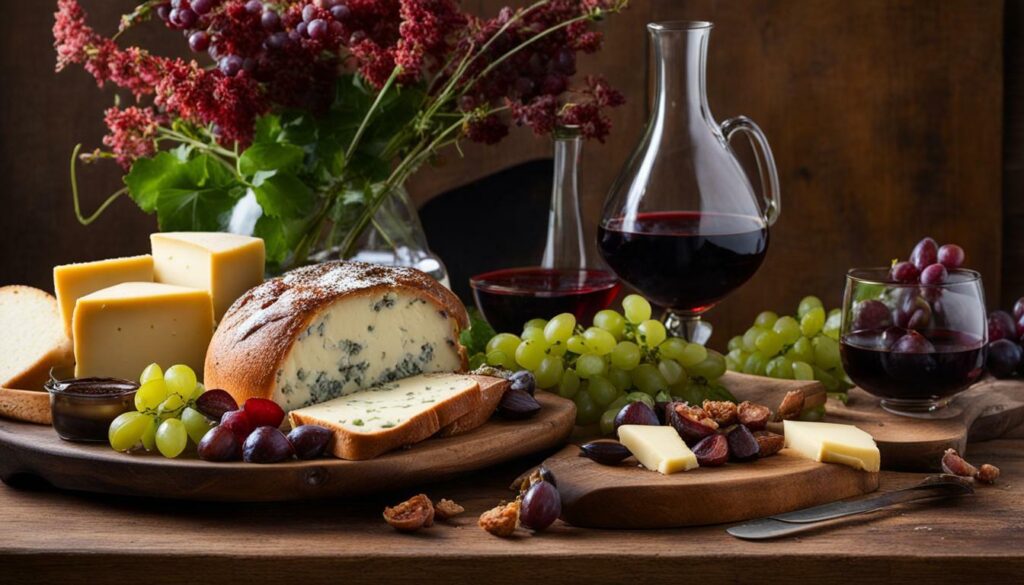
In the image above, you can see a representation of traditional foods that have been enjoyed in France throughout history. These dishes reflect the diverse culinary heritage of the country and the influence of both nobility and peasants on French cuisine.
Culinary Evolution and French Colonizers
The spread and evolution of French cuisine can be attributed in part to the influence of French colonizers. As explorers and traders ventured to new lands, they brought back exotic ingredients and cooking techniques that enriched the culinary traditions of France. The introduction of new flavours and spices from places like India, the Americas, and Asia added a vibrant diversity to French cooking.
“French cuisine is a melting pot of flavours and influences,” says renowned chef Pierre Dubois.
“From the subtle spiciness of North African tagines to the delicate balance of flavors in Vietnamese pho, French cuisine has embraced the culinary gifts of its colonizers. These international influences have not only expanded the repertoire of French dishes but have also elevated the art of cooking in France.”
- French colonizers also played a significant role in the introduction of staple ingredients to France. Foods like potatoes, tomatoes, and cocoa beans were brought back from the New World and quickly integrated into French cuisine. They became fundamental components of beloved dishes such as Ratatouille, Bouillabaisse, and Chocolate Mousse.
- The influence of French colonizers is evident in the vibrant flavours and elegant presentations that characterize traditional French foods. The fusion of French techniques with global ingredients has created a culinary landscape that is both diverse and sophisticated.
This cultural exchange continues to shape the modern French culinary scene, with chefs and home cooks alike drawing inspiration from a wide range of international flavours. French cuisine has become a celebration of diversity, offering a delicious journey through history and cultures.
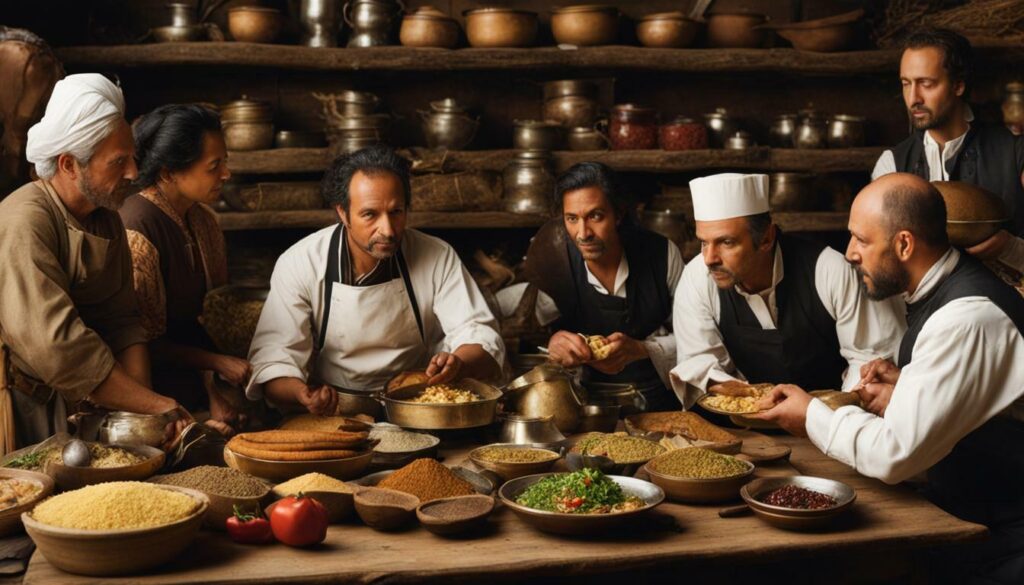
| French Colonizers | Influences on French Cuisine |
|---|---|
| North African Countries | Introduces spices, such as cumin and coriander, and cooking techniques for dishes like tagines. |
| Asia | Brings flavors like soy sauce, ginger, and rice to France, leading to the creation of fusion dishes. |
| The Americas | Introduces ingredients like potatoes, tomatoes, and cocoa beans that become staples in French cuisine. |
In summary, the influence of French colonizers has played a vital role in the spread and evolution of French cuisine. Through their exploration and trade, they introduced new ingredients, spices, and cooking techniques that have shaped the culinary traditions of France. Today, French cuisine continues to embrace international flavours, making it a diverse and vibrant culinary experience.
Haute Cuisine: The Era of Moderation and Quality
The 1800s marked the era of haute cuisine in France, characterized by a focus on moderation and quality. French chefs during this period aimed to create dishes that were both aesthetically pleasing and satisfying to the palate. They prioritized the use of fresh, high-quality ingredients and paid meticulous attention to cooking techniques.
Haute cuisine emphasized moderation in portion sizes, favouring smaller, more refined servings that allowed diners to savour the flavours and appreciate the craftsmanship put into each dish. This departure from the excessive feasts of the past reflected a shift towards a more balanced and sophisticated approach to gastronomy.
French chefs, such as Georges Auguste Escoffier, played a vital role in establishing haute cuisine as an art form. Escoffier’s culinary innovations and emphasis on precision and quality set the foundation for modern French cooking.
The era of haute cuisine also saw the rise of renowned French restaurants, which became institutions for culinary excellence. These establishments captivated diners with their impeccable service, refined ambience, and exquisite menus.
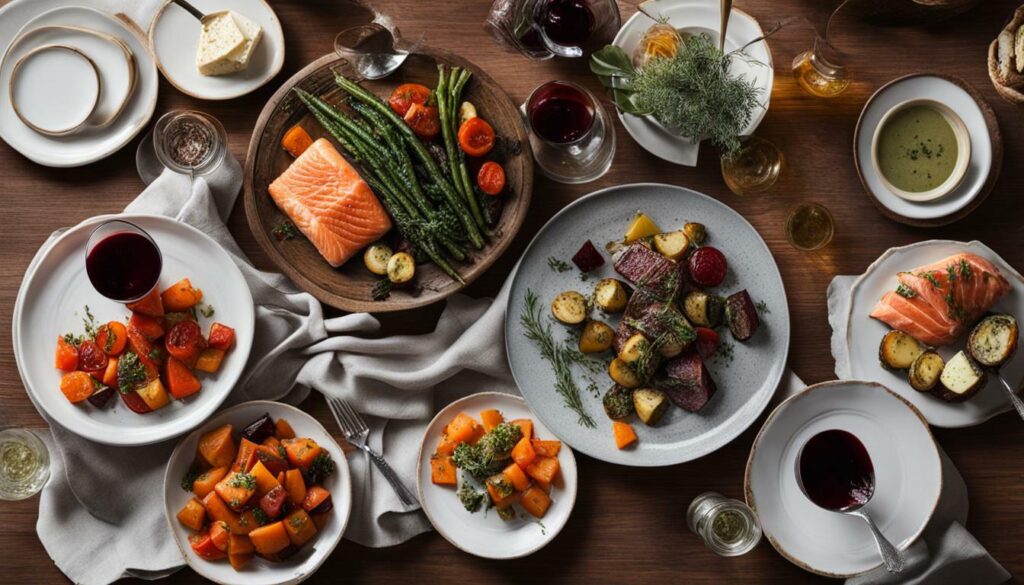
Today, the influence of haute cuisine can still be felt in the world of French gastronomy. Its emphasis on moderation, quality, and attention to detail continues to inspire chefs and food enthusiasts alike. French cuisine remains a beloved and celebrated culinary tradition, reflecting the country’s rich cultural heritage.
The Art of French Cooking Techniques
French cooking techniques are renowned for their precision and attention to detail. From the art of sautéing to the mastery of the perfect soufflé, French cuisine is a testament to the skill and craftsmanship of its chefs. Whether it’s the delicate balance of flavours in a classic sauce or the precise timing required to achieve the ideal doneness of a steak, every step of the cooking process is carefully executed.
One of the key techniques in French cuisine is mise en place, which translates to “putting in place.” This involves preparing and organizing all the ingredients before starting to cook, ensuring that everything is readily accessible and measured precisely. This meticulous approach allows for efficient and smooth execution in the kitchen.
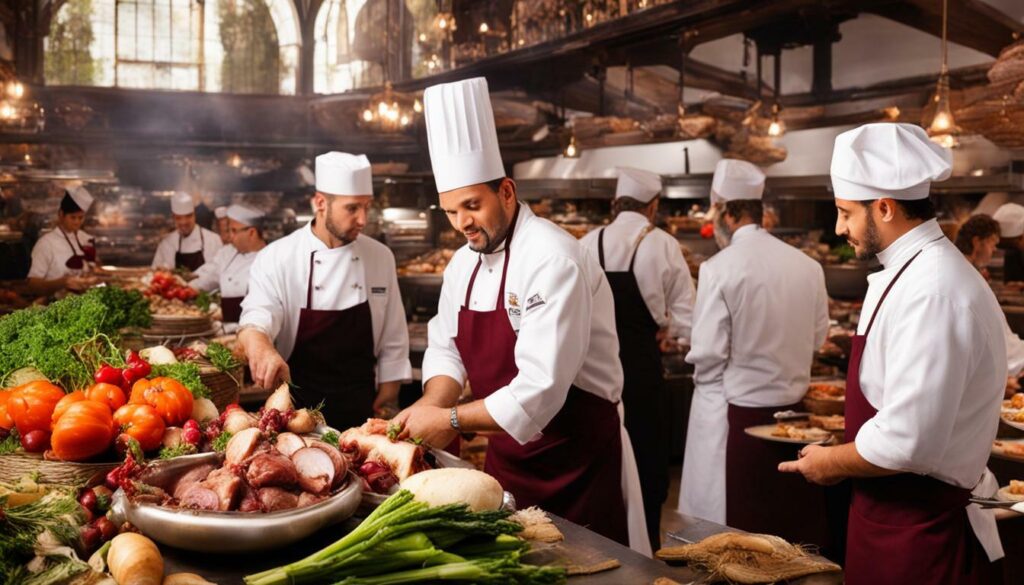
“Cooking is not just about the taste and presentation of the dish, but also about the emotions and memories it evokes.”
Another notable technique is the art of deglazing. After searing meat or vegetables in a pan, a small amount of liquid, such as wine or stock, is added to the hot pan to loosen and dissolve the flavorful browned bits, known as the fond. This technique adds depth and richness to sauces and gravies and is an essential step in many French recipes.
The Importance of Patience and Attention to Detail
French cooking requires patience and attention to detail. The slow braising of meats, the careful reduction of sauces, and the precise layering of flavours all contribute to the complexity and depth of French dishes. It is these meticulous techniques that elevate French cuisine to an art form.
| French Cooking Techniques | Description |
|---|---|
| Sous Vide | A cooking method that involves vacuum-sealing ingredients in a plastic bag and cooking them at a precise temperature in a water bath, resulting in tender and flavorful dishes. |
| Flambé | The process of igniting alcohol, usually brandy or rum, in a hot pan to create a dramatic burst of flame that enhances the flavour of a dish. |
| Bain-marie | A gentle cooking technique that involves placing a container of food in a larger pan of water, creating a gentle and even heat for delicate preparations like custards or chocolate. |
French cooking techniques have influenced chefs around the world and continue to be celebrated for their artistry and precision. Whether you’re enjoying a classic Coq au Vin or indulging in a delicate Tarte Tatin, each bite is a testament to the centuries-old traditions and unwavering dedication to culinary excellence.
The Importance of Fresh Ingredients
Fresh and high-quality ingredients are the cornerstone of French cuisine. In fact, French chefs take great pride in sourcing the finest ingredients to create their culinary masterpieces. Whether it’s a simple salad or a complex sauce, every dish in French cuisine starts with the freshest and most flavorful ingredients available.
French cooking emphasizes the use of seasonal produce, ensuring that dishes are bursting with vibrant flavours. From juicy tomatoes and fragrant herbs in the summer to earthy root vegetables and hearty greens in the winter, French cuisine celebrates the natural bounty of each season.
The commitment to freshness extends beyond fruits and vegetables. From the succulent seafood of the coastal regions to the tender meats of the countryside, French chefs prioritize quality and provenance. They believe that the taste and texture of an ingredient can make or break a dish, and they go to great lengths to source the best ingredients available.
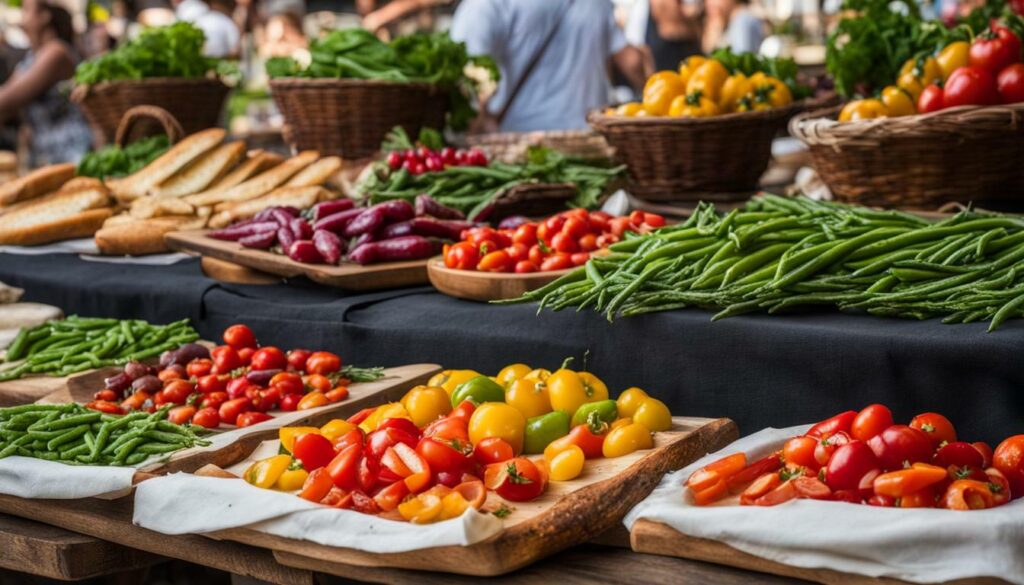
French cuisine also places a strong emphasis on local and sustainable ingredients. Many French chefs source their ingredients from local farmers, artisans, and markets, supporting the local economy and reducing their carbon footprint. By using fresh and local ingredients, French chefs ensure that their dishes are not only delicious but also environmentally responsible.
In summary, the importance of fresh ingredients in French cuisine cannot be overstated. From the humblest peasant dish to the most exquisite fine dining creation, the quality of the ingredients is what sets French cuisine apart. So the next time you savor a French meal, take a moment to appreciate the care and attention that goes into sourcing and using the freshest ingredients to create a truly unforgettable culinary experience.
The Art of Presentation and Elegance
The dining experience is considered an art form in French cuisine, with an emphasis on presentation and elegance. Every dish is meticulously crafted to please not only the taste buds but also the eyes. French chefs understand that a beautifully presented meal can enhance the overall enjoyment of the food.
In French cuisine, presentation is seen as an extension of the chef’s creativity and skill. Each plate is carefully arranged to showcase the ingredients in a visually appealing manner. From the vibrant colours of fresh vegetables to the delicate placement of sauces, every element of the dish is thoughtfully considered. This attention to detail transforms a simple meal into a work of art.
The importance of presentation extends beyond individual plates. French dining culture places great value on creating a visually striking table setting. The table is adorned with elegant tableware, including fine china, crystal glassware, and polished silverware. Tablecloths and napkins are meticulously folded, adding an air of sophistication to the dining experience.
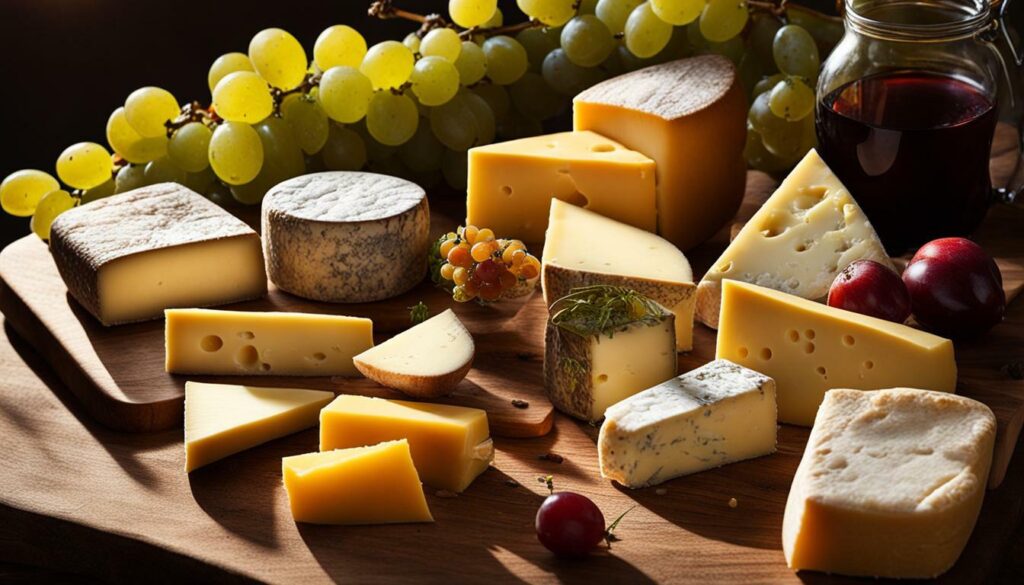
French cuisine is also known for its exquisite desserts and pastries, which are often displayed in elaborate pastry shops and patisseries. It is not uncommon to find rows of colourful macarons, delicate tarts, and intricately decorated cakes. These sweet treats are carefully crafted to be as visually stunning as they are delicious.
Whether it’s a simple family meal or an extravagant feast, French cuisine never fails to impress with its emphasis on presentation and elegance. By blending culinary artistry with visual aesthetics, French chefs have elevated the dining experience to a whole new level.
The French Revolution and Food
The French Revolution had a profound impact on the food culture of France, with bread and salt at the heart of the conflict. As the revolution unfolded, bread became a symbol of political and social inequality. The high cost and scarcity of bread were major grievances that led to widespread unrest among the French population. The revolutionaries recognized the significance of bread as a staple food and sought to address the bread crisis by implementing reforms to ensure fair distribution and affordability.
During this period, salt also played a significant role in the revolution. Salt was heavily taxed and controlled by the monarchy, which further fueled the discontent of the French populace. The salt tax, known as the gabelle, was one of the many grievances that pushed the revolutionaries to demand change. The abolishment of the salt tax became a symbol of liberation and equality.
“The Revolution did not merely affect the quantity of bread produced and consumed; it affected the taste, the way it was made and eaten, and the social and cultural roles of bread as well.”
– William Beier, “The French Revolution and the Creation of Modern Political Culture”
The French Revolution brought significant changes to the food culture of France. It marked a shift towards a more inclusive society, where access to bread and salt was considered a right rather than a privilege. These changes laid the foundation for a new era in French cuisine, paving the way for the birth of the modern restaurant and a more egalitarian approach to food.
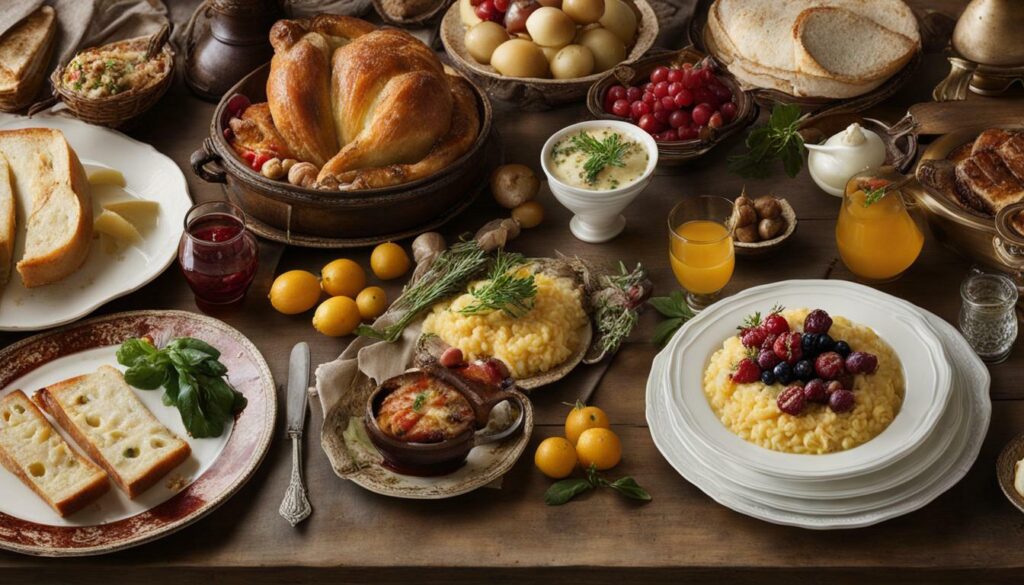
| French Cuisine Before the Revolution | French Cuisine After the Revolution |
|---|---|
| Extravagant feasts of the nobility | A more egalitarian approach to food |
| Scarcity and high cost of bread | Reforms ensuring fair distribution and affordability of bread |
| Heavy taxation and control of salt | Abolishment of the salt tax, symbolizing liberation and equality |
The Birth of the Modern Restaurant
One of the lasting legacies of the French Revolution was the birth of the modern restaurant. As the revolution dismantled the rigid social hierarchies of the past, restaurants began to emerge as gathering places for people from all walks of life. These establishments offered a wide range of affordable and accessible dishes, catering to the diverse tastes and preferences of the French population. The revolution not only transformed the way food was consumed but also democratized the dining experience, making it accessible to the masses.
The French Revolution forever changed the food culture of France, leaving a lasting impact on the country’s cuisine. The struggles and demands for equality during this turbulent period laid the foundation for the culinary traditions and values that continue to shape French cuisine to this day.
The Birth of the Modern Restaurant
The French Revolution sparked a revolution in the culinary world, giving rise to the modern restaurant in France. As the political landscape shifted, the gastronomic scene experienced a radical transformation, reflecting the changing social dynamics of the time. Previously, dining had been primarily reserved for the aristocracy, who enjoyed elaborate feasts in their grand homes and palaces. However, the revolution brought about a new era of equality, leading to the emergence of establishments that provided a dining experience for the general public.
One of the most notable figures in this culinary revolution was François Pierre La Varenne, a French chef and author who played a pivotal role in shaping modern French cuisine. La Varenne’s influential cookbook, “Le Cuisinier François,” published in 1651, introduced a more accessible and refined style of cooking, emphasizing the importance of technique and precision in the kitchen. His recipes laid the foundation for the development of a standardized culinary repertoire, which would later become the hallmark of French cuisine.
Another key contributor to the birth of the modern restaurant was Antoine Beauvilliers, a renowned restaurateur who opened the first true restaurant in Paris in 1782. Beauvilliers’ establishment, called “La Grande Taverne de Londres,” offered a wide range of dishes to suit the diverse tastes and preferences of its patrons. This marked a departure from the previous practice of serving fixed menus at dining establishments, giving customers the freedom to choose from a variety of options.
The modern restaurant soon became a popular social hub, attracting intellectuals, artists, and the bourgeoisie. It became a place for people to gather, share ideas, and enjoy gastronomic delights. These new dining establishments not only revolutionized the way people ate but also influenced the development of French cuisine as a whole. The rise of the modern restaurant marked a turning point in culinary history, democratizing the dining experience and setting the stage for the vibrant food culture that France is known for today.

| Key Figures | Significance |
|---|---|
| François Pierre La Varenne | Introduced refined cooking techniques and standardized recipes. |
| Antoine Beauvilliers | Opened the first true restaurant and offered a diverse menu selection. |
French Food Video Tour
Traditional Foods in French Culture Today
Despite the evolution of French cuisine, traditional foods remain an integral part of French culture today. From the rustic countryside to the bustling streets of Paris, the essence of French cooking can be found in every corner of the country. These time-honoured dishes not only reflect the rich history and culinary heritage of France but also offer a delightful gastronomic experience.
One cannot discuss traditional French foods without mentioning the iconic baguette. This long, crusty bread with a soft interior is a staple in French households. It is often enjoyed with a variety of cheeses, as the French take great pride in their extensive cheese culture. From creamy Brie to tangy Roquefort, there is a cheese to suit every palate.
Another beloved traditional dish is Coq au Vin, a slow-cooked stew made with chicken, red wine, mushrooms, and herbs. This hearty and flavorful dish embodies the rustic elegance of French cuisine. Similarly, Ratatouille, a vegetable medley featuring eggplant, zucchini, bell peppers, and tomatoes, showcases the simplicity and vibrant flavors of Provence.

When it comes to desserts, France is renowned for its exquisite pastries and sweets. The delicate and flaky croissant, the rich and creamy crème brûlée, and the colorful macarons are just a few examples of the delectable treats that grace patisserie windows. These mouthwatering delights are a true testament to the artistry and craftsmanship of French pastry chefs.
In summary, traditional foods play a significant role in French culture, offering a glimpse into the country’s culinary traditions and regional diversity. Whether it’s a humble baguette or an elaborate gourmet dish, these traditional foods continue to captivate taste buds and evoke a sense of nostalgia for both locals and visitors alike.
Festive and Popular Foods of France
France is renowned for its festive and popular foods that have gained international recognition. From sweet pastries to indulgent cheeses, there is something to tantalize every taste bud. One of the most iconic dishes in French cuisine is the escargot, which consists of cooked snails drenched in garlic butter and served in their shells. This delicacy is often enjoyed during special occasions and is considered a true treat for the palate.
Another beloved dish that showcases the diversity of French cuisine is the bouillabaisse. Hailing from the coastal region of Provence, this hearty fish stew is made with a medley of fresh seafood such as fish, shellfish, and crustaceans, along with aromatic herbs and spices. It is served with a slice of crusty bread and a saffron-infused rouille sauce, adding a burst of flavour to each spoonful.
No discussion of festive foods in France would be complete without mentioning the delectable macarons. These colourful almond meringue cookies, sandwiched together with a creamy filling, come in a variety of flavours, from classic vanilla to exotic combinations like lavender and pistachio. Macarons are often given as gifts and are a staple at celebratory gatherings, adding a touch of elegance to any table.
The Table below presents a list of 3 famous French foods:
| Famous French Foods | Description |
|---|---|
| Coq au Vin | A classic French dish made with chicken cooked in red wine, mushrooms, and onions, resulting in tender and flavorful meat. |
| Tarte Tatin | A delightful caramelized apple tart with a buttery pastry crust, often served warm with a dollop of crème fraîche or vanilla ice cream. |
| Crêpes | Thin, delicate pancakes that can be enjoyed with a variety of sweet or savoury fillings, such as Nutella, strawberries, or ham and cheese. |
These are just a few examples of the festive and popular foods that have put France on the culinary map. Whether it’s a special occasion or a simple gathering with loved ones, French cuisine offers an array of flavours and dishes that are sure to satisfy and impress.

Conclusion
Exploring the past and present diets of France offers valuable insights into the cultural and culinary richness of the country’s food traditions. French cuisine holds a fascinating history that spans centuries, with each era leaving its mark on the evolution of traditional foods.
In the Middle Ages, the nobility indulged in extravagant feasts that featured exotic spices and ingredients like peacock. Meanwhile, peasants relied on vegetable-centric diets, making the most of the bountiful produce available to them.
Over time, French cuisine spread and evolved through the publication of cookbooks and the influence of French colonizers. The emergence of haute cuisine in the 1800s brought a new focus on moderation and quality, shaping the way French food is prepared and enjoyed.
The art of French cooking techniques is characterized by patience and attention to detail. From perfectly executed sauces to delicate pastry work, these techniques elevate the flavours and textures of traditional French dishes.
Central to French cuisine is the importance of using fresh, high-quality ingredients. The emphasis on sourcing the best produce, meats, and seafood ensures that each dish is infused with vibrant flavours.
The French also understand the significance of presentation and elegance in their culinary traditions. The dining experience is carefully curated, with attention given to the visual appeal of each dish.
The impact of the French Revolution on food cannot be understated. Bread and salt, basic staples of the time, took on symbolic importance and became central to the conflict. Ultimately, the revolution paved the way for the birth of the modern restaurant, forever changing the dining landscape of France.
Today, traditional French foods continue to be cherished, showcasing the enduring culinary heritage of the country. From classic dishes like coq au vin and boeuf bourguignon to regional specialities like ratatouille and bouillabaisse, French cuisine is celebrated for its depth of flavor and cultural significance.
Exploring the past and present diets of France reveals a fascinating journey through history, offering a glimpse into the rich tapestry of the country’s food traditions. From lavish feasts to simple peasant fare, French cuisine embodies a unique blend of sophistication and simplicity that has captivated the world.
FAQ
What is the history of food in France?
French cuisine has a rich history that dates back centuries, with influences from various regions and culinary traditions. It has evolved over time, with different periods and events shaping its development.
What are traditional French foods?
Traditional French foods vary across different regions, but some popular examples include baguettes, croissants, escargots, coq au vin, bouillabaisse, and ratatouille. These dishes reflect the diversity and culinary heritage of the country.
How did French cuisine evolve during the Middle Ages?
In the Middle Ages, the nobility enjoyed lavish feasts featuring exotic spices and ingredients like a peacock, while peasants had diets centred around vegetables and legumes.
How did French colonizers influence the cuisine?
French colonizers played a significant role in spreading and evolving French cuisine. They brought back new ingredients and cooking techniques from their colonies, which had a lasting impact on traditional foods in France.
What is haute cuisine?
Haute cuisine emerged in the 1800s and is characterized by moderation and quality. It focuses on using the finest ingredients and creating balanced, refined dishes.
What are some key cooking techniques in French cuisine?
French cooking techniques require patience and attention to detail. Some commonly used techniques include sautéing, braising, roasting, and baking.
Why are fresh ingredients important in French cooking?
Fresh, high-quality ingredients are essential in French cuisine as they contribute to the overall flavour and quality of the dishes. The focus on using the best produce ensures a delightful culinary experience.
Why are presentation and elegance emphasized in French cuisine?
Presentation and elegance are important aspects of French cuisine as they enhance the dining experience. The visual appeal of a dish is considered as important as its taste, contributing to the overall enjoyment of the meal.
How did the French Revolution impact food in France?
The French Revolution had a significant impact on food in France. Bread and salt were at the heart of the conflict, symbolizing the inequality and scarcity experienced by the lower classes. This period marked a turning point in the country’s culinary traditions.
How did the French Revolution contribute to the birth of the modern restaurant?
The French Revolution played a crucial role in the birth of the modern restaurant. During the revolution, many chefs and kitchen staff lost their jobs due to the decline of the nobility. This led to the opening of public eateries, where people could pay for meals, giving rise to the restaurant industry.
What are some traditional foods that are still cherished in French culture today?
Traditional French foods that continue to be cherished in French culture today include classics like coq au vin, bouillabaisse, cassoulet, tarte tatin, and cheese. These iconic dishes represent the enduring culinary heritage of the country.
What are some festive and popular foods in France?
France is known for its festive and popular foods. Some examples include foie gras, crêpes, macarons, onion soup, and champagne. These dishes are enjoyed during celebrations and are loved by locals and tourists alike.
What are the main takeaways from exploring the diets of France?
Exploring the past and present diets of France provides valuable insights into the cultural and culinary heritage of the country. It highlights the diversity and nuances of traditional French foods, showcasing the evolution and enduring popularity of this cuisine.
Source Links
- https://www.smithsonianmag.com/arts-culture/when-food-changed-history-the-french-revolution-93598442/
- https://www.escoffier.edu/blog/world-food-drink/french-cooking-how-and-why-french-cuisine-came-to-rule-the-world/
- https://www.getty.edu/news/imagining-the-culinary-past-in-france-recipes-for-a-medieval-feast



